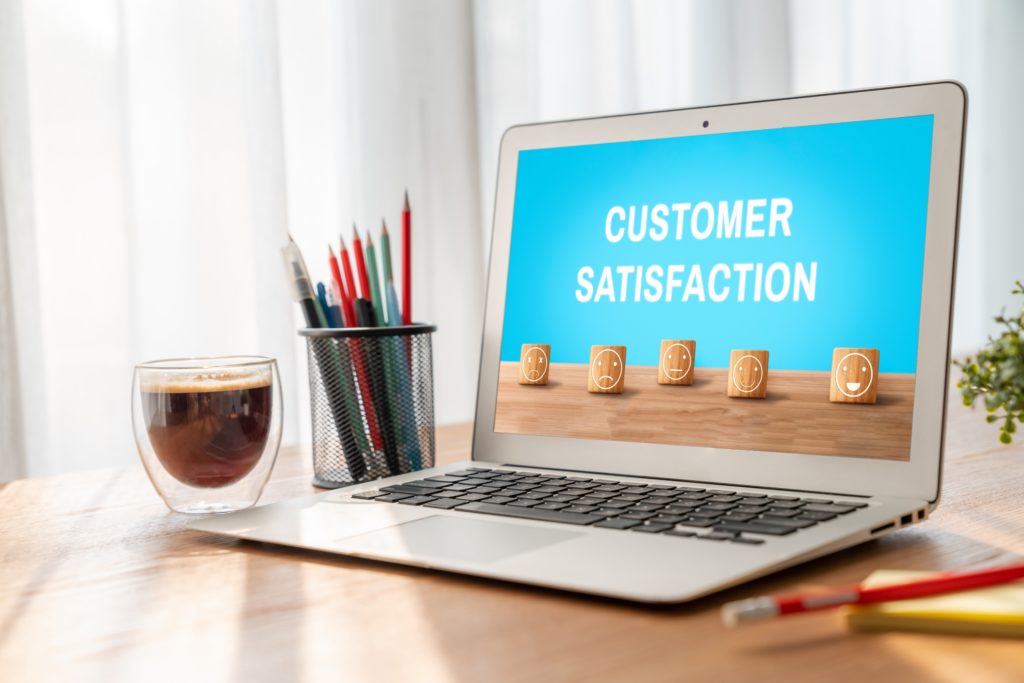Building your SaaS doesn’t happen in isolation
Typically, startups are born out of a founder’s personal pain point, where existing solutions fall short in terms of usability, complexity (usually too complex), or cost-effectiveness. By talking to their peers, founders often uncover a shared frustration that points to a potential market need.
The key is to start with a tangible problem, not just an idea. With an ideal customer profile in mind, founders begin development. When contacting potential buyers, the initial focus isn’t on selling, but on gauging interest in the hypothetical solution. If the responses lean toward a resounding “yes,” there’s promise. But when “maybes” dominate, it becomes imperative to reassess the value proposition and its relevance to the target market.
Understand your audience
So it’s clear that understanding your audience is paramount for founders and founding teams. Put significant effort into market research. This must be a continuous, obsessive effort until you reach product-market fit (PMF). Take the time to actually write things down! Explore ideas through whiteboard sessions, digital tools like Miro, or traditional pen and paper. Whatever method suits you, work with your team to define your Ideal Customer Profile (ICP).
Once your ICP is defined, broaden your scope to identify the pain points, needs, and triggers that drive the search for a solution. Consider the channels through which you can effectively reach your audience. Mapping out a basic customer journey can provide invaluable insight into potential interactions and highlight areas that need attention.
Be prepared for your ICP to evolve, especially in the early stages, as you gather market feedback and observe reactions to your solution.

Craft a compelling value prop
Creating a compelling value proposition is essential, even in the early stages of your startup journey. While your presentation website that delivers this value proposition may not be the most polished or highest converting at first, it serves as a vital starting point. The site’s copy, content, and user journey must be closely aligned with your ideal customer profile (ICP) and their journey.
In the early stages, hand-holding is common regardless of your sales approach. However, if you’re pursuing a product-driven strategy, prioritizing the usability and appeal of the product is paramount. Make sure this shines through on the website as well. Conversely, for a sales-led approach, in addition to a compelling value proposition, make sure prospects can easily connect with your team.
When it comes to your messaging and positioning, it’s important to remember that your audience is likely unfamiliar with who you are and what you offer. When they do express interest and you engage them through various channels (which we’ll discuss shortly), your messaging must be crystal clear and highly specific.
Using vague or overly broad messages such as “Just do it” is not only ineffective but also risky, especially for a new SaaS product. In addition to potential trademark issues, such phrases lack the specificity needed to effectively communicate your unique selling points.
Since you’re just getting started, clarity is key. Precisely articulate the problem you’re solving, who you’re solving it for, and the value they’ll receive (i.e., why the benefit of your product is important to them). Avoid ambiguity, as your level of awareness is directly related to the clarity and precision of your messaging.
Win your first customer
Let’s say you already have your proof of concept (POC) and have launched your MVP (minimum viable product)! To secure your first customer, leverage your network – use platforms like LinkedIn, reconnect with former colleagues, and attend relevant events. Through persistence and networking, you’ve made it. Well done!
Landing your first paying client is a notable achievement that marks a breakthrough moment in your journey. It’s not easy, but it’s certainly achievable. But securing your first paying customer is just the beginning. The real work lies ahead. You want to achieve that illusive product-market fit.
Getting your first 100 SaaS customers is a significant milestone in your growth trajectory. It’s time to roll up your sleeves and get to work on scaling your SaaS business.

Test acquisition channels
Testing acquisition channels is a critical endeavor for early-stage SaaS startups. Beyond defining your ideal customer profile (ICP), it’s imperative to determine which channels are most effective for customer acquisition. This process involves experimenting with different marketing and sales channels and strategies to determine which ones yield optimal results.
However, this journey isn’t without its challenges, especially when time and resources are limited. Here are a few tactics you can try:
- First, establish credibility and social trust. Get reviews and testimonials from your early adopters and use them on your website and landing pages. This is where you can get creative. Maybe you already have a product line and want to branch out into something new. You can still use existing generic testimonials to show your new prospects that you as a company are trustworthy and serious about doing business with them. Of course, you can become more specific as you gain more testimonials for the new product.
- Do product launches, such as on platforms like Product Hunt, especially if you are targeting a primarily US audience. This requires a lot of commitment and strong community support. If you don’t feel you’re ready, leave it for later.
- Offer a free version of your product (or at the very least, a free trial) – a powerful tactic to entice potential SaaS buyers. If you’re building a product-driven business, this is a must, but even for sales-assisted motions, customers want to try-before-they-buy and get a feel for the product before pulling out their credit cards.
However, alongside this freemium strategy, a solid SaaS pricing strategy is essential. Your pricing model should reflect the value proposition of your SaaS offering, align with customer expectations, and support sustainable growth. Consider factors such as value-based pricing, tiered plans, and flexible pricing options to optimize revenue generation while maximizing customer satisfaction and retention. Most importantly, your pricing should not be a set-and-forget tactic. The more you optimize your pricing, the higher the chances to win.
Check out this essential guide in Pricing for success in SaaS.
- Create relevant content – especially pieces that address the pain points of your ICP that you want to solve, as long as you tie them to the triggers for finding a solution. Content can come in many shapes and sizes, from blog articles to webinars to competitive comparisons and so on. As a rule of thumb, understand how you can best use that content to generate leads and nurture them effectively. The nurturing part is often neglected, so get good at it!
- Build a newsletter list – while modest at first, has immense potential to become a valuable asset to your audience over time.
- Depending on your budget, you may also want to try paid advertising, sometimes a quick way for new signups. But pay attention to their quality (!), to how do they convert further along the journey. Advertising is also a great way to test your messages, fast.
Convert freemium users into subscribers
While acquiring a significant number of freemium users is a positive step, the ultimate goal is to convert them into paying customers. To do this, it’s important to understand their needs and behaviors.
With product analytics, you can analyze user interactions and usage patterns to identify key indicators of successful conversions. By identifying the profile of users most likely to convert, you can more effectively target your marketing and sales efforts. Look for commonalities among successful conversions and strive to replicate these patterns across your user base. For example, if most of your paying customers have completed a specific step in your SaaS app that provides them with a high level of value, try to “push” the rest of your free accounts toward the same goal.
Consider implementing targeted messaging and incentives to encourage freemium users to upgrade to paid subscriptions, such as exclusive features or limited-time offers triggered by specific actions (or lack thereof). Through continuous analysis and optimization, your goal is to maximize the conversion rate of freemium users and drive sustainable revenue growth for your SaaS business.
But remember, product analytics isn’t just about tracking KPIs within your SaaS – it’s about providing insight into problem areas so you understand what you can do to solve them.

While product analytics is an indispensable tool for any SaaS application today, qualitative surveys and one-on-one conversations with successfully converted users remain invaluable. So take the initiative to send out surveys (can be even one or two questions only) and even get on the phone with these users to gain first-hand insight into their experience. By speaking directly with them, you can learn what they like about your product or service and identify areas for improvement. These conversations provide a unique opportunity to delve deeper into their needs, preferences, and pain points, allowing you to refine your offerings beyond some potentially misleading KPIs.
In addition, fostering a personal connection through these interactions can increase customer satisfaction and loyalty. Ultimately, by leveraging both digital and in-person touchpoints, you can cultivate stronger relationships with your customers and drive continuous improvement of your SaaS offerings.
To summarize, whatever acquisition channels you try, as you discover what works, talk to those customers relentlessly to understand if they are a good fit and, just as importantly, monitor their activity within your SaaS platform – do they return, do they renew, what feedback do they provide.
Implement referral programs
Implementing referral programs can be a powerful strategy, especially if your SaaS acquisition efforts are limited. Referral programs leverage the existing network of satisfied customers to drive new user acquisition. By incentivizing current users to refer friends, colleagues, or contacts to your SaaS platform, you can reach a broader audience without relying solely on your acquisition budget. These programs not only encourage customer advocacy, but also capitalize on the trust and credibility established within personal networks.
Before you dive into implementing a referral program, it’s important to gauge the sentiment of your current customers through a variety of means. While customer satisfaction is important, it doesn’t necessarily correlate with referrals. That’s why it’s important to conduct thorough research and ask customers both questions: “How satisfied are you with our SaaS?” and the Net Promoter Score (NPS) question: “How likely are you to recommend us?”
It’s often surprising to discover that many satisfied customers may not be inclined to recommend a vendor. This could be for a variety of reasons, such as they find it too much of a hassle or time consuming to switch to another supplier. In addition, they may have personalized the platform to meet their specific needs, but recognize that others may not find value in these customizations. Identifying these potential roadblocks is invaluable to the overall health and growth potential of your SaaS business.
By understanding the nuances between customer satisfaction and referral propensity, you can tailor your approach to maximize the effectiveness of your referral program and cultivate a loyal base of brand advocates. With this insight, you can remove any barriers to referrals and optimize the customer experience, ultimately driving sustainable growth for your SaaS business.

Get your stakeholders rooting for you
When it comes to growing a SaaS business, harnessing the expertise and support of stakeholders, including investors and key employees, will help accelerate success. Not only are these stakeholders (financially) invested in your company’s success, but they also bring valuable insights, networks, and resources to the table.
Engaging with investors is an opportunity to tap into their industry knowledge, strategic guidance, and connections within the startup ecosystem. They often have a wealth of experience working with other companies in similar fields and can offer valuable advice on scaling strategies, market positioning, and fundraising efforts. In addition, investors may have access to valuable networks of potential customers, and partners, who can help move your SaaS business forward.
Similarly, involving key employees in your growth initiatives can have significant benefits. These employees have intimate knowledge of your product, market, and customer base, making them valuable contributors to brainstorming sessions and strategy discussions. By fostering a culture of collaboration and empowerment, you can tap into your team’s collective expertise to generate innovative ideas, identify growth opportunities, and overcome challenges.
In addition, actively seeking input and ideas from stakeholders demonstrates a commitment to transparency and inclusiveness, and fosters a sense of ownership and alignment around common goals.
Embrace the learning process
On the path to your first 100 SaaS subscribers, it’s important to celebrate milestones, no matter how small they may seem. Each subscriber represents a significant achievement and a step forward in your growth trajectory. In addition, embrace the learning process along the way, recognizing that every success and every setback provides valuable insight and opportunities for improvement. Finally, as you reach this milestone, keep your focus on the future and your next phase of growth. With a solid foundation in place, it’s time to set your sights on scaling your subscriber base and expanding the reach and impact of your SaaS business. By remaining resilient, adaptable, and committed to continuous improvement, you’ll be well positioned to achieve success in the journey ahead.
- SEO Powered Content & PR Distribution. Get Amplified Today.
- PlatoData.Network Vertical Generative Ai. Empower Yourself. Access Here.
- PlatoAiStream. Web3 Intelligence. Knowledge Amplified. Access Here.
- PlatoESG. Carbon, CleanTech, Energy, Environment, Solar, Waste Management. Access Here.
- PlatoHealth. Biotech and Clinical Trials Intelligence. Access Here.
- Source: https://blog.2checkout.com/unlocking-your-first-100-saas-subscribers/



